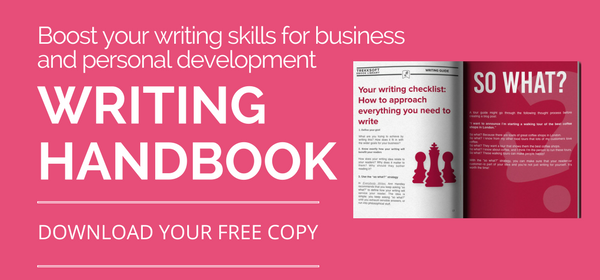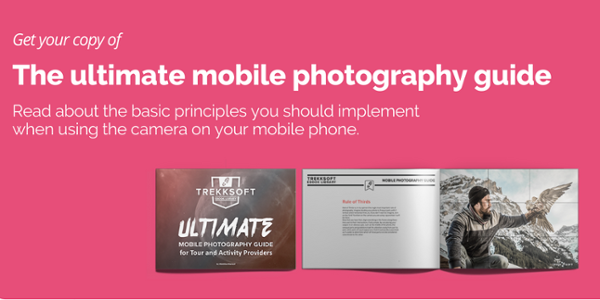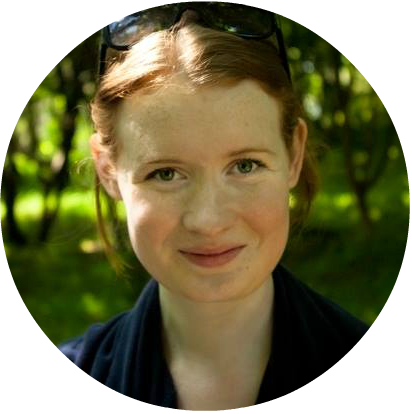90% of information transmitted to the brain is visual, and visuals are processed 60,000X faster in the brain than text. This should impact the content marketing strategy of any business, but especially those in the tourism industry.
Your customers want to visualise the experience of your tours and activities. How will it make them feel? What photos will they have to share with friends and family afterwards?
Travellers also need to feel sufficiently inspired to book a trip. What is it about your business that inspires your target customers to choose you instead of competitors?
To stand out in the tourism industry and increase bookings, place visuals centre-stage in your marketing. Here are some ideas to kick-start your visual storytelling.
1. Optimise your website design to maximise bookings
According to research conducted at Missouri University of Science and Technology, it takes 2.6 seconds for a user’s eyes to land on the area of a website that most influences their first impression. Make this first impression count.

Below are the features of a website where users' eyes tend to fixate, in order of average time spent looking at them. These are worth strengthening in order to boost your bookings and lower bounce rate (the percentage of users who leave after only viewing one page):
- The institution’s logo (6.48 seconds)
- The main navigation menu (6.44 seconds)
- The search box (just over 6 seconds)
- The site’s main image (5.94 seconds)
- The site’s written content (5.59 seconds)
- The bottom of a website (5.25 seconds)
DO: Check if these sections of your website are the best they can be. Are images high-quality and engaging? If not, set aside some time to optimise them, or hire a professional.
2. It's worth investing in professional photography and video
Photography can make our break your visual marketing, so it's important to get it right. We're not all born talented photographers, and while there are apps and editing tools that can help us along the way, sometimes it's worth giving the task to those who do it best.

DO: Think about the visual content that will best sell your tours and activities. Perhaps it will be local heritage sites or cultural landmarks that customers see on your tours, or sublime views from your activities in nature. It may be worth hiring a photographer to take these key photos for the centre of your visual marketing, then carrying a camera with you to continue expanding your archives.
3. Make the most of above-the-fold space on your homepage
First impressions of a website are formed in 0.05 seconds, meaning that the above-the-fold content on your website (what you see before you scroll down) is crucial. To provide users with the best first impression, you could include a full-width image or video at the top of your home page. Whatever you choose, make sure it is: high-quality, memorable, representative of your business, and quick to load.
DO: Ask someone to load up your website and give you an honest first impression. Do you make the most of your above-the-fold space?
4. Curate social media-friendly visuals
In 2014, the amount of video in Facebook's News feed increased 3.6X year-over-year. Over on Twitter, tweets with images receive 18% more clicks, 89% more favorites and 150% more retweets.

Use of visual content in Facebook campaigns generates 65% more engagement after only a month's practice, says an infographic shared by HubSpot.
To keep up with social media trends that are becoming increasingly visual, it is worth putting in the time.
DO:
- Choose a Facebook cover photo and Twitter header image that are high-quality, represent your business, inspire customers, and are as engaging as possible
- Add full-width images to your social media posts
- Look out for engaging and relevant videos that you can add to your content calendar
- Continually optimise your social media strategy, taking visual content into account
5. Images should be part of your wider storytelling strategy
Listen to your customers and what they care about. Can you integrate this with your content strategy? If you provide vineyard tours, you might share insider photos of your vines growing through their organic lifecycle. A bike tour guide might share photos of the most exciting cultural sights on her tour alongside little-known facts about them.
Strive to be useful to your customers and they'll remember you. Can you create a downloadable guide on must-see sights in your city? What about an image showing your customers how to make famous local recipies?
Show the human side of your business and build trust. Do you share photos of your team on your website and social media channels? Give people the chance to find out a little about you and your story and they may be more likely to book your tours.
DO: Open a notebook and create lists on three pages: 1) what my customers care about, 2) ways I can be useful to my customers, 3) ways I can show the human side of my business. Spend ten minutes jotting down the first ideas that come to mind. Next, create action points for your marketing to-do list.
6. Quality infographics can be highly shareable
Publishers who use infographics grow in traffic an average of 12% more than those who don't, says Customer Magnetism. It is hard to get it right if you're not a designer, so if you're looking to create something shareable, it might be worth oursourcing.

DO: Think about - or research - if there's interesting data that is relevant to your tour, activity, or location. Could you represent this visually? Fun ideas could be an infographics of:
- Where your customers are from one summer
- Bike-related facts about your city if you have a bike tour
- The number of beers that leave the brewery where you run your tours, the sources of grains or hops, the quantities of ingredients that are used in a year.
7. Inspiration has the greatest impact when it comes to visual content
A study at Temple University reveals that inspiration-related elements have the greatest impact on first-impression formation for tourism websites. Visual content that nurtures a sense of inspiration influences users to stay longer on a site, which in turn converts more website visitors into buyers.
DO: Think about the dream behind the tour or activity you're selling. Is it the once-in-a-lifetime acquatic sights of deep sea diving in Bali? Or the cultural immersion of a bike tour through Amsterdam? Pinpoint the dreams that your customers are seeking. Next, emphasise these through inspirational photography.
8. Include great images with every blog post
Content featuring compelling images averages 94 percent more total views than those without, according to MDG Advertising. Include a winning header image with each blog post and you will:- Have a high-quality featured image when you share the article on social media
- Allow your reader to best visualise your content and wider identity
- Encourage readers to share or bookmark your blog post
If a blog post contains a lot of text, it's also worth making it more digestible with images between paragraphs. Diversify the experience that your readers gain from your content with photos, videos, and infographics.

DO: Look at your most successful blog posts. Do they contain images? Browse through your posts and consider where visual content will best complement your writing. If you don't yet have a blog for your tour or activity company, here are some reasons to get one.
9. Encourage user-generated content
Fans of Tourism Australia share 900 photos for consideration by the brand per day on Facebook and Instagram. If a fan's photo is shared by the account, they typically get tens of thousands of likes per Facebook post. While not all tourism companies get that much social media engagement, user-generated content can be powerful for all of us.
DO: Make it easy for people to take photos during your tour or activity. At the end, let them know that you will retweet their photos or share on Facebook and Instagram.
Give customers a business card with your social media handles on, or include these in automated emails sent out before and after the tour or activity. To maximise efficiency, you can do this with TrekkSoft's booking software.
Want to receive even more exclusive tips on how to build your business?





